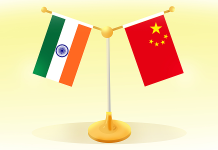The Baloch Liberation Army (BLA), launched Operation Herof 2.0, a series of seven coordinated attacks targeting military posts, intelligence agents, and resource-looting vehicles. Across Balochistan, Pakistan, including Panjgur, Khuzdar, and Noshki, May. The BLA employed automatic weapons, rocket launchers, and highway blockades in 78 operations at 58 different locations. The campaign killed two soldiers, injured five, and neutralized four alleged agents, escalating the BLA’s insurgency against Pakistan’s alleged “occupation.”
In This Article:
The Attacks: Tactical Precision
In Panjgur’s Nokabad, BLA fighters assaulted a military post for 25 minutes, using rocket launchers and grenades, killing two soldiers and injuring five. In Khuzdar’s Ornach Cross, they controlled a highway for over two hours, targeting resource-looting vehicles and burning a Levies Force post. Noshki saw four alleged intelligence agents neutralized after interrogation, while Sibi and Kachi faced grenade attacks on army posts, injuring three. The BLA also seized surveillance cameras in Panjgur’s Paroom Jain, bolstering its tactical edge.
Context: A Growing Insurgency
Operation Herof 2.0 follows Operation Herof (August 2024), which killed 130 Pakistani military personnel and controlled highways for 20 hours. The BLA frames these as resistance to 76 years of Baloch oppression, citing enforced disappearances and resource exploitation. The attacks, amid Pakistan’s Azm-e-Ishtekam counter-terrorism operation, highlight the group’s defiance despite military crackdowns.
Tactical Evolution and Digital Strategy
The BLA’s shift to large-scale operations, involving female suicide bombers and units like the Fateh Squad, shows growing sophistication. The group uses Telegram and Rumble to share real-time updates, bypassing traditional media. A post-Herof video featured a former Frontier Corps member citing state repression, amplifying recruitment. This digital strategy enhances the BLA’s psychological warfare and global reach.
Impact and Regional Concerns
The attacks disrupt highways and challenge state control, targeting resource vehicles linked to the China-Pakistan Economic Corridor (CPEC). With two soldiers killed and broader societal support, including from women and working-class Baloch, the operation signals a revitalized insurgency. It strains Pakistan’s security and risks tensions with China, a CPEC investor.
-By Manoj H




